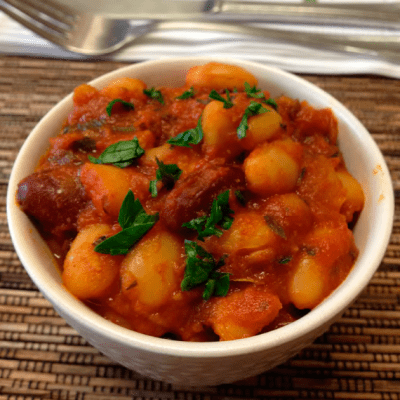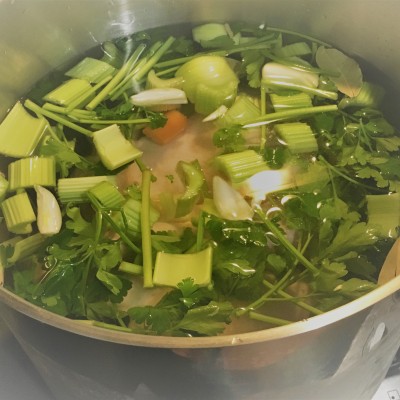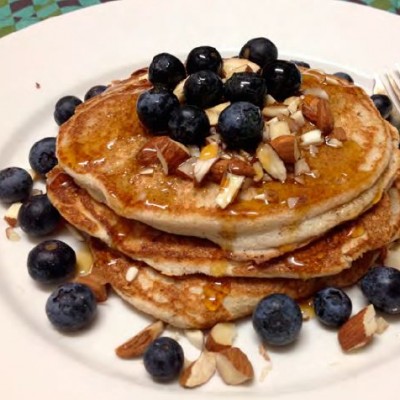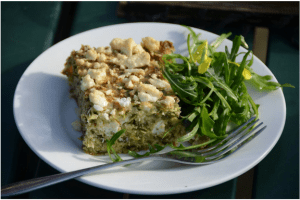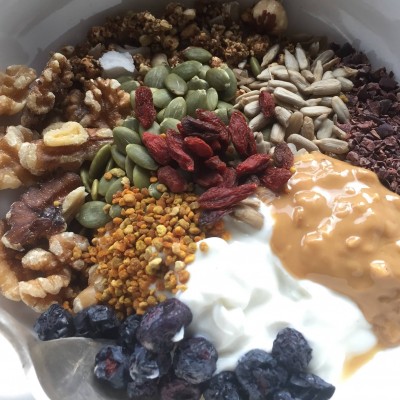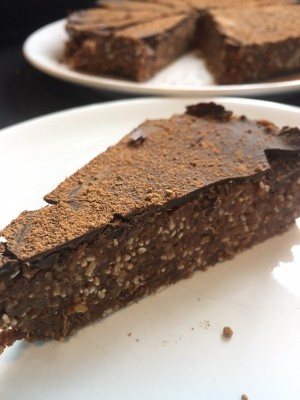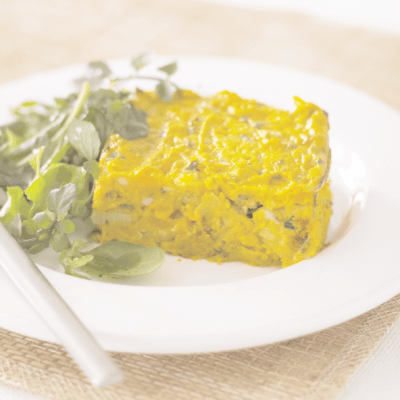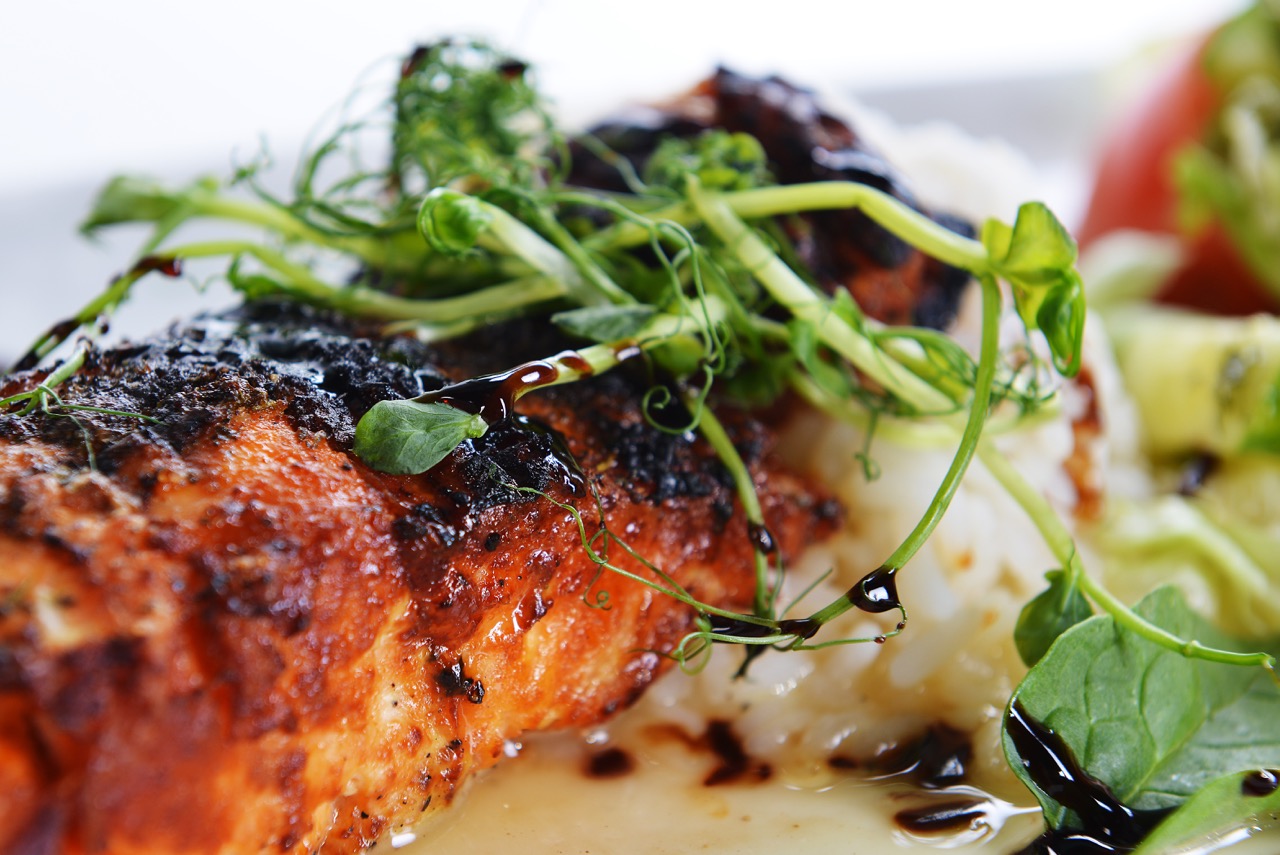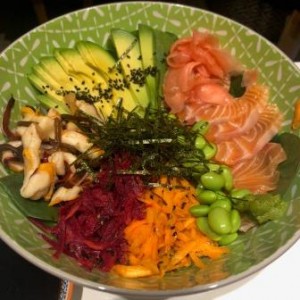
This sashimi bowl is quick & easy to prepare, is perfect for cold or warm months (just plus or minus miso soup) and provides loads of nutrition. If you’re pregnant (ie no raw fish) or vegetarian, use cooked salmon, tofu or tempeh instead of raw salmon, and seaweed salad instead of pickled octopus.
Nutritional benefits:
Protein: a variation of animal & vegetable sources, from the salmon, octopus, sesame seeds & edamame.
Good fats: again a variation of sources, from the salmon, sesame seeds, sesame oil & avocado.
Low carb: this is a very low carb meal. If you do need some extra carbs, you could add brown rice.
Prebiotics & probiotics: this provides plenty in the way of good support for your gut bacteria. Miso & apple cider vinegar are sources of probiotics, and purple carrots & black sesame seeds are excellent prebiotics- food for your good gut bacteria.
Antioxidants: different coloured vegetable pigments represent variations in antioxidants. This meal provides you with green, orange & purple pigments- considered the three most important.
Purple vegetables in particular are excellent for antioxidant support, and purple carrots are considered to be one of the best. If you haven’t seen them before, check your local organic grocer, or they are even available at some Woolworths stores in the organic section (mind you, this is an over-packaged and over-priced option…..). If you can’t find them, just use 2 orange carrots.
Phyto-oestrogens: whilst there is a lot of information on the internet about the ‘problems’ with soy, you’ll find the research shows that eating whole-soy sources is associated with positives outcomes for women in relation to hormones and fertility. Miso & edamame are two such foods (along with tofu & tempeh).
Iodine: seaweed is an excellent dietary source of iodine, and integral nutrient for preconception & pregnancy outcomes.
Hope you enjoy the recipe!
Serves 2
Ingredients:
You may need to visit a Japanese grocer for some of these items. There’s a great one at 279 Smith St Fitzroy, called Hinoki. And try an organic grocer or the organic section of Woolworths for the purple carrots.
2 large handfuls of baby spinach or mixed salad leaves
200g sashimi grade salmon, thinly sliced
100g Japanese picked octopus
100g frozen edamame beans, thawed
1 avocado, thinly sliced
Pickled carrots:
1 purple carrot
1 orange carrot
2 tsp black sesame seeds
2 tsp of apple cider or Japanese rice wine vinegar
2 tsp tamari/Japanese soy sauce
1 tsp of sesame oil
Garnish:
shredded dried seaweed
2 tsp black sesame seeds
wasabi & pickled ginger (if desired)
Serve with:
tamari
2 tsp of miso pate, dissolved in hot water to make a simple miso soup.
Variations: pregnant (ie no raw fish) or vegetarian? Use cooked salmon, tofu or tempeh instead of raw salmon, and seaweed salad instead of pickled octopus.
Directions:
To make pickled carrots, grate carrots into separate bowls. Add half the sesame seeds, vinegar, tamari & sesame oil to each bowl. Mix to combine.
Divide leaves between two large bowls. Divide pickled carrots, salmon, octopus, edamame & avocado between bowls. Garnish as desired, serve with tamari & a cup of miso soup.
 Rhiannon is an experienced naturopath and nutritionist, with post graduate qualifications in Fertility Education. Rhiannon is committed to the successful integration of natural and conventional medicine, and believes ideal outcomes are achieved for patients when all their health care providers are working together. She incorporates the use of lifestyle counselling, nutritional supplementation and herbal medicine to achieve optimum results for each individual patient.
Rhiannon is an experienced naturopath and nutritionist, with post graduate qualifications in Fertility Education. Rhiannon is committed to the successful integration of natural and conventional medicine, and believes ideal outcomes are achieved for patients when all their health care providers are working together. She incorporates the use of lifestyle counselling, nutritional supplementation and herbal medicine to achieve optimum results for each individual patient.


